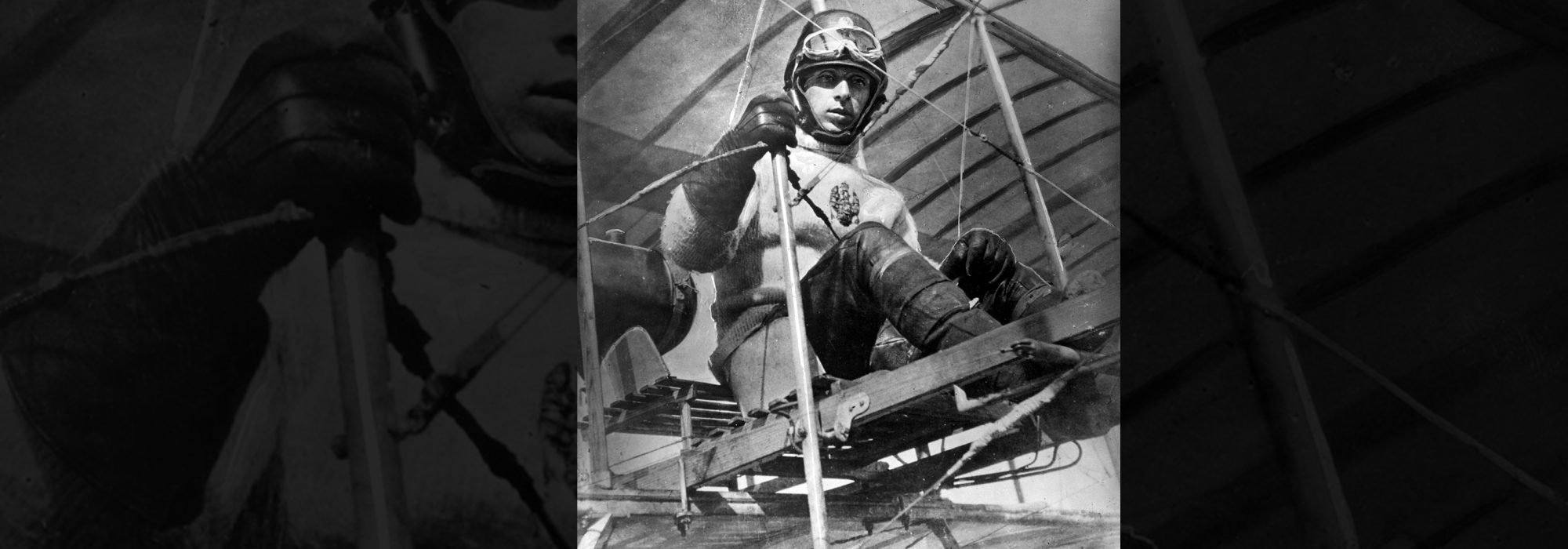A futurist with airpower prowess.
A
lexander deSeversky was a well-known and popular aviation figure in America during World War II. He was a fighter ace and war hero, aircraft designer, entrepreneur, writer, and theorist. In that last role he was a transitional figure between the conventional bombing theorists of the 1940s and the nuclear thinkers of the 1950s. He was an unabashed airpower advocate.
“Sasha” was born in Georgia, then part of Russia, and after graduating from the Imperial Naval Academy he joined the flying service. On his first combat mission he met with disaster. While attacking a German ship his aircraft was hit by antiaircraft fire and crashed into the Baltic Sea. The concussion detonated one of his bombs, killing the observer and severing his own right leg below the knee. Seversky survived, was rescued by a Russian patrol boat, and after eight months in convalescence, returned to Active duty with an artificial limb.
Assigned a job in aircraft production, he applied his mechanical acumen to the design of devices that would make a pilot’s job easier: hydraulic brakes, adjustable rudder pedals, and special bearings for flight controls. He also experimented with aircraft skis for landing on icy surfaces and a sophisticated bombsight. These inventions won him an award for the top aeronautical ideas of the year.
Although designing aircraft was important work, Seversky wanted to return to flying duty, but was told this was impossible. Nevertheless, he persevered and eventually his situation came to the attention of Czar Nicholas, who decided that Russia needed colorful heroes and intervened to have Seversky returned to combat duty.
Over the next year he flew 57 combat missions and scored 13 victories over German aircraft. The exploits of “the legless ace” won him a Gold Sword from the Czar as well as the Cross of St. George, Imperial Russia’s highest decoration. Posted to Washington as part of the Russian naval mission soon after, Seversky elected to remain in the U.S. after the Russian Revolution.
In 1921 he was introduced to Brig. Gen. Billy Mitchell, who secured him a job at McCook Field, Ohio. There Seversky designed a gyroscopic bombsight and an innovative air-refueling device used on the “Question Mark” flight of 1929 when an Air Corps aircraft remained aloft for over six days. In 1927 Seversky became a naturalized U.S. citizen and was commissioned a major in the Air Corps Reserve.
He founded Seversky Aircraft Corp. in 1931 and there patented devices such as split flaps, metal monocoque construction, retractable landing gear and pontoons, and specialized flight instruments. His design talent was obvious, and his SEV-3 amphibian set world speed records in 1933 and 1935. A version of this model became the P-35, a remarkable aircraft that was the first all-metal monoplane fighter mass produced in the U.S., incorporating an enclosed cockpit, retractable landing gear, and cantilever wing. The Air Corps purchased 137 of this aircraft, the direct ancestor of the famed P-47 “Thunderbolt.” There were two other unusual characteristics of the P-35: it was extremely fast, its civilian version won the Bendix Air Race in 1937, 1938, and 1939 (flown by Jackie Cochran in 1938); and it had long range, incorporating fuel tanks in its thick wing. Seversky also called for increased armament; whereas, standard equipment was two .30-caliber machine guns, he advocated for six to eight .50 caliber guns. These would soon become standard equipment on fighter aircraft.
Seversky’s ability as an aeronautical engineer was obvious, and he was awarded the Harmon Trophy, presented by President Franklin D. Roosevelt in 1939, and the Lord and Taylor American Design Award for 1940. He was not, however, a businessman. His corporation never made much money and was constantly behind in its production orders. In May 1939, while out of the country, he was removed as president and ousted from the company, whose name was then changed to Republic. In truth, Seversky’s removal from business had positive results: it gave him the time to use his considerable charm and communication skills to write and talk about his favorite topic, airpower.
Alexander de Seversky was the most effective and prolific airpower advocate of his era. His hundreds of articles and lectures spanned the country. His most famous book, “Victory Through Air Power,” was a Book-of-the-Month selection that was read by millions and turned into an animated movie by Walt Disney. Because of his homey, down-to-earth style, he spoke the language average Americans could understand. He preached that airpower had become the dominant arm of military power and should be recognized as such. The development of atomic weapons solidified this position. The major died in 1974 at age 80.
Seversky wrote two other books, “Airpower: Key to Survival” and “America: Too Young to Die,” but neither was of the same caliber as “Victory.” An outstanding biography is James K. Libbey’s, “Alexander P. de Seversky and the Quest for Air Power.”


